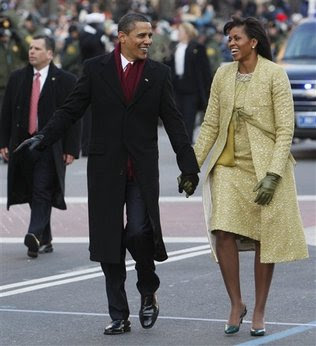
words by Howard Kissel via nydailynews.com
How lucky we are to live in a world of excess!
I found myself thinking this at a splendid luncheon this afternoon at the Rainbow Room honoring Isabel Toledo. The designer was the recipient of the third annual Artistry of Fashion award of the Couture Council of The Museum at FIT.
Toledo’s work has an architectural ingenuity as well as an exuberance and wit that suggest the couture of another time, when cost was never an obstacle to the artist’s vision. Describing her work as he made the award presentation, Andre Leon Talley, with whom I toiled many years ago at Women’s Wear Daily, said it would befit “a grandee  of Spain, but without the lugubriousness.”
of Spain, but without the lugubriousness.”
I had not known that Toledo worked for the divine Diana Vreeland at the Metropolitan Museum. As a young woman, not yet making her living as a designer, she was impressed that when Vreeland discussed Balenciaga, it was in the tones that, elsewhere in the building, might have been used to discuss Picasso.
“Clothing is what the time looks like,” was one of the things she learned from Vreeland, Toledo herself told us on receiving the award from Talley. (In fact some time later, emcee Simon Doonan realized he hadn’t actually given her the award, but it didn’t really matter.)
Vreeland taught her that clothes could shape history, which happens to be true, though one must discount a great deal of what Vreeland said since clothes were her perspective on everything.
That is one of the drawbacks of being immersed in fashion. When I was at WWD, for example, a fashion editor became enamored of a certain dress Dominique Sanda wore in “The Conformist.” She had her assistant call the film publicist to get stills of Sanda wearing it.
Only on seeing the stills did she realize it was the scene where Jean-Louis Trintignant has driven his wife into the forest to be murdered. When your obsession is fashion you don’t see the blood. You see only the lines of the dress.
Nevertheless it is certainly the case that an archaeologist at some later date might learn a lot about the late 20th and early 21st century America from studying Toledo’s work. The sculptural quality of much of it could only be done in a time of plenty, when clothing belongs to the realm of intellect and play rather than necessity. (Interestingly, Doonan noted that a longtime fan of her work is Michelle Obama.)
I was touched that in a wonderful display of photos of Isabel’s life dating back to her childhood in pre-Castro Cuba, there was a shot of her with Laura Bush in the White House. What made it special to Toledo was that one of the other honorees was the ceramic designer Eva Zeisel, who has been my friend for more than 30 of her nearly 102 years.
Isabel’s gifted husband Ruben used spirited drawings to make placemats for the occasion, which we were allowed to take home. It reminded me of the very first high class fashion show I ever attended, in the Pool Room of the Four Seasons some 40 years ago.
At the time I was writing about men’s fashion, and this show was to introduce us to the first men’s wear line by Bates, which until then specialized in towels and tablecloths. I had never been to anything so elegant. Perfect omelets were made right at the tables when we sat down.
At the end of the show we learned that under one plate at every table was a marker. The person who had it was entitled to take the Bates tablecloth. What had been a patrician event turned to pandemonimum.












No comments:
Post a Comment